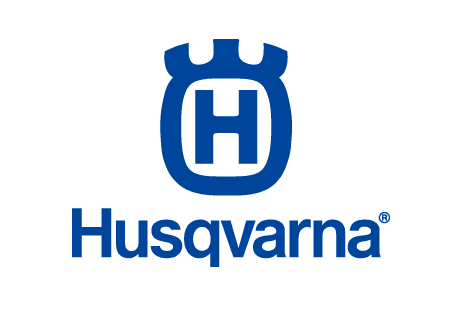Founded 1904 Parent organization Pierer Industrie AG | Area served Worldwide | |
 | ||
Industry ManufacturingDistribution Key people Stefan Pierer, Oliver Göhring, Reinhold Zens Website husqvarna-motorcycles.com Profiles | ||
The journey of a legendary brand husqvarna motorcycles
Husqvarna Motorcycles GmbH, designs, engineers, manufactures and distributes motocross, enduro, supermoto motorcycles and mopeds.
Contents
- The journey of a legendary brand husqvarna motorcycles
- This is husqvarna motorcycles official video
- History
- Acquisition by Pierer Industries
- Automobile manufacturing
- Bicycle manufacturing
- Models
- References
The company began producing motorcycles in 1903 at Huskvarna, Sweden, as a subsidiary of the Husqvarna armament firm.
This is husqvarna motorcycles official video
History
Husqvarna was founded near the town of the same name in Sweden in 1689. As a maker of muskets, the logo still depicts a gun sight viewed from the end of the barrel.
As with many motorcycle manufacturers, Husqvarna first began producing bicycles in the late 19th century. In 1903, they made the jump to motorcycle manufacturing. The first "Husky" motorcycles used imported engines, and it wasn't until 1918 that Husqvarna began producing machines built entirely in-house. Around that time they secured a contract with the Swedish Army and began entering cross-country and long-distance motorcycle racing events. In 1920, Husqvarna established its own engine factory and the first engine to be designed was a 550 cc four-stroke 50-degree side-valve V-twin engine, similar to those made by companies like Harley-Davidson and Indian. Although they once made motorcycles for street use, and raced at road circuits such as the Isle of Man TT prior to World War II, they are better known for producing world championship winning motocross and enduro bikes.
Husqvarna competed in Grand Prix road racing in the 350cc and 500cc classes during the 1930s and was Sweden's largest motorcycle manufacturer by 1939. All of the racing bikes were based on a 50-degree V-twin prototype built by Folke Mannerstedt in 1931. The company team beat the Norton Works team at the Swedish GP in 1931 with a 1–2 finish by Ragnar Sundqvist and Gunnar Kalen. This and the next year's success led to a full commitment to the GP tracks with Stanley Woods and Ernie Nott joining the Husqvarna riding team. That year, Nott finished 3rd in the 350cc Junior TT and Woods ran out of gas 8 miles before the finish of the Senior TT. In 1935 the company withdrew racing support, but new bikes were still produced and raced privately, while the company focused on producing a new 2-stroke, 2-speed commuter bike. That year, Stanley Woods won the Swedish GP (marking the fourth year in a row that a "Husky" had won) on a 500cc Husqvarna motorcycle that weighted 279 pounds (127 kilograms).
In the 1960s, their lightweight, two-stroke engined off-road bikes helped make the once dominant British four-stroke motorcycles obsolete. Throughout the 1960s and 1970s, Husqvarna was a dominant force in the motocross world, winning 14 Motocross world championships in the 125 cc, 250 cc and 500 cc divisions, 24 enduro world championships and 11 Baja 1000 victories.
In 1987, the Husqvarna motorcycle division (not the other arms of the brand such as chainsaw production) was sold to Italian motorcycle manufacturer Cagiva and became part of MV Agusta Motor S.p.A. The motorcycles, widely known as "Huskies"/ "Husky", were then produced in Varese. Husqvarna produces a diverse range of motocross, enduro and supermoto machines using their own two-stroke or four-stroke engines, ranging in capacity from 125 cc to 576 cc. Racing continues to be important to Husqvarna, competing in world enduro and world supermoto championships. Gerald Delepine, riding a Husqvarna SMR660, became supermoto world champion in 2005. In 2008, Adrien Chareyre took the title, riding an SM530RR.
In July 2007, Husqvarna motorcycles was purchased by BMW for a reported €93,000,000. BMW Motorrad planned to continue operating Husqvarna Motorcycles as a separate enterprise. All development, sales and production activities, as well as the workforce, remained at its location in Varese, in Italy. BMW intended to position Husqvarna as "the two-wheeled version of what Mini is to the BMW's car division".
Acquisition by Pierer Industries
On 31 January 2013 BMW Group announced that Pierer Industrie AG has bought full stake in Husqvarna AG for an undisclosed amount. The company is headed by Stefan Pierer, current CEO of KTM-Sportmotorcycle AG. On 1 October 2013, Husqvarna AG was renamed to Husqvarna Sportmotorcycle GmbH. It was announced that the company will be based at Mattighofen in Austria where production started on 11 October 2013.
Owing to the common ownership of Husqvarna (100% via Pierer Industrie AG) and Husaberg (51% via Cross Industries AG) by Stefan Pierer; Husaberg will cease to exist as a marque and will provide technical assistance to the newly resurrected Husqvarna brand.
Automobile manufacturing
Toward the end of World War II, a team comprising Bengt Magnusson (head of R&D), Stig Tham (engineer), Calle Heimdal (engine designer) and Birger Johansson investigated manufacture of a small, simple, inexpensive car. The design looked similar to the Saab 92, but with three wheels (two front, one back), and an unusual split rear window. According to some sources the similarities with the Saab 92 may have had something to do with Sixten Sason working as designer at Husqvarna. A prototype was built in 1943, powered by a 20 hp (15 kW) two-cylinder 500 cc DKW motorcycle engine with chain drive to the rear wheel. The wheels came from a Fiat 500. The project was cancelled in 1944, and the prototype was scrapped at the end of the 1950s.
Bicycle manufacturing
Husqvarna is also prominent in Swedish bicycle history. They have been one of the Swedish military bicycle manufacturers. Husqvarna's Novo hub competed well with imports, but bicycle manufacturing was discontinued in the early 1960s.
Models
Enduro
Motocross
Supermoto
